El clima: Tiempo we are seeing fewer areas with the incredibly high levels seen over the summer, 76.8% of the population continues to live in areas with substantial or higher transmission. Layers of protection remain necessary to reduce infection.
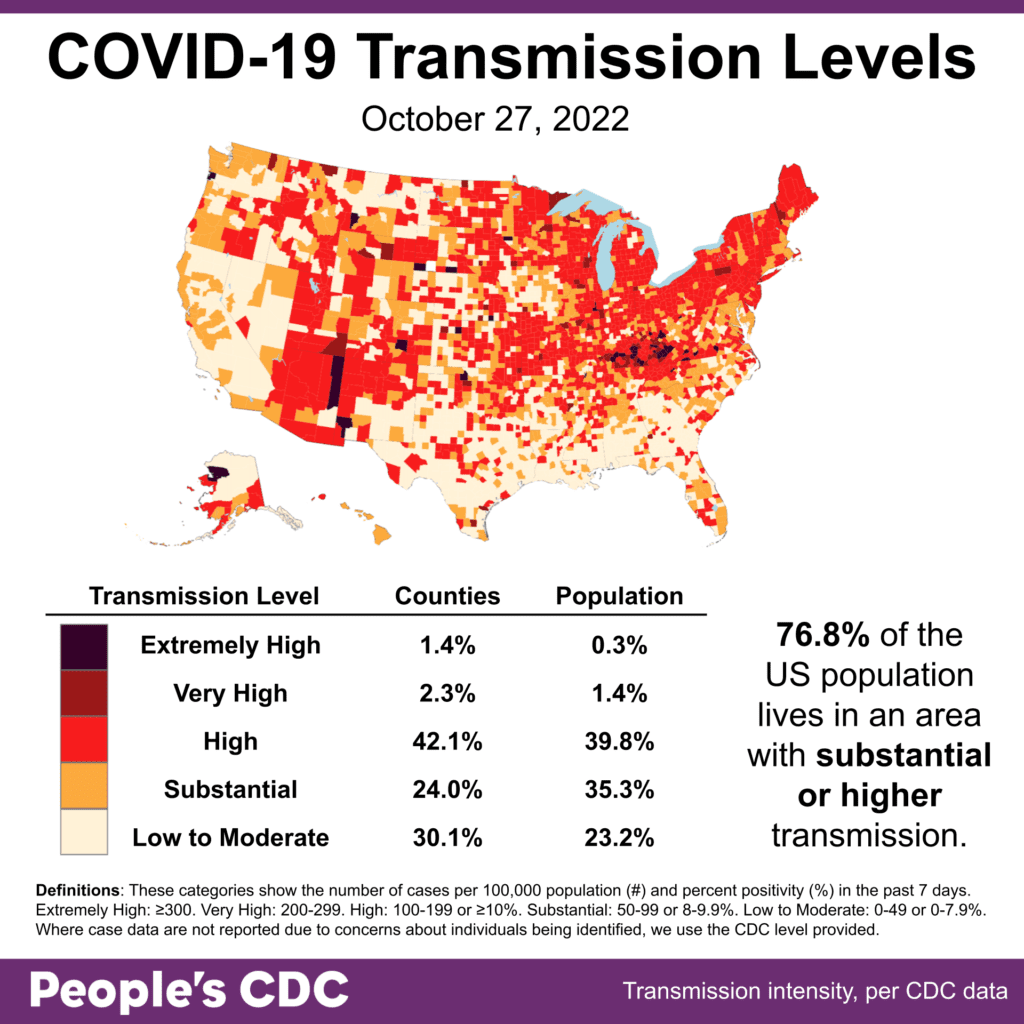
Sobre variantes: BA.5’s reign has come to a close, with 50% of cases this week. BA4.6 & BF7 are showing stable or slow growth (10% & 8%, respectively). Instead, BQ1 & BQ1.1, the more immune-evasive variants, are now showing rapid growth, up to 27% of all cases.

Hay regional differences in the variants and their growth: more cases are BQ1 & BQ1.1 (green & dark green) in the East, Great Lakes & South, while relatively rarer in the Central Plains & Pacific Northwest. However, we expect it will rapidly spread to these areas as well.
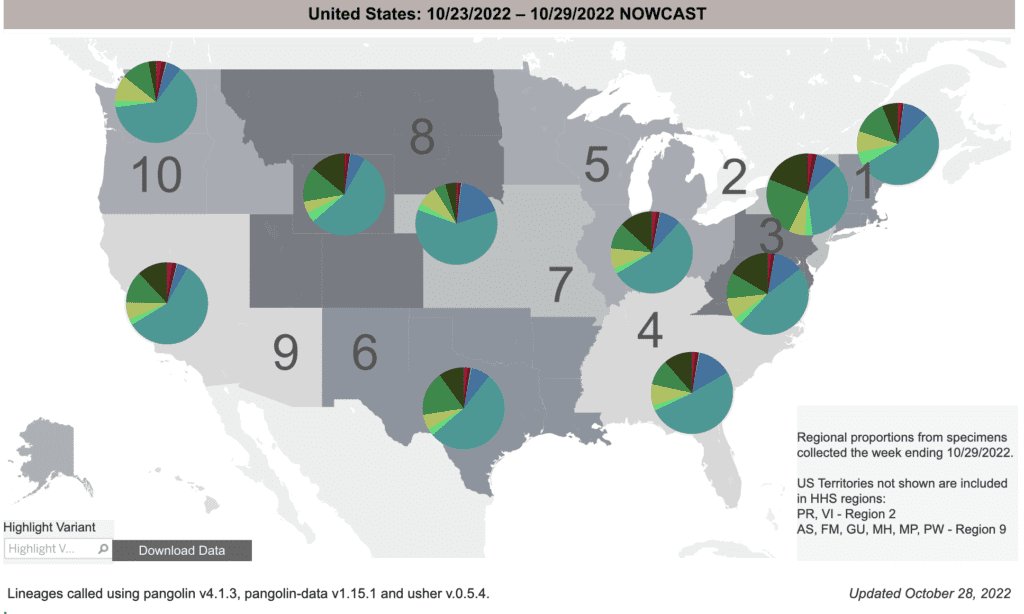
Monitoreo de aguas residuales: National niveles de aguas residuales continue to bounce around at a fairly high level but show general decline. All regions show fairly stable levels, except the Northeast – which is declining but still has the highest levels.
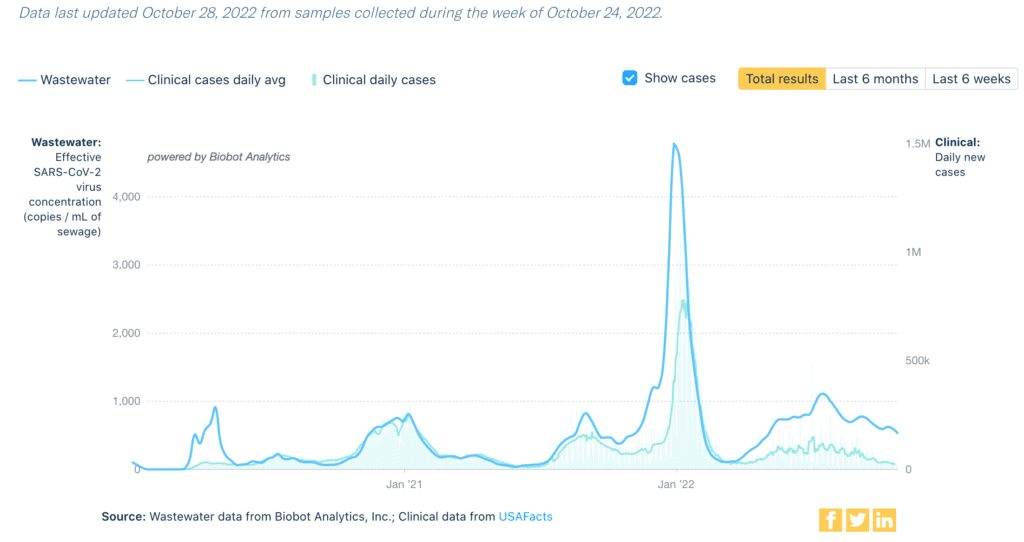
Hospitalizaciones: Hospitalizaciones are mostly flat compared to last week, with some increases in the East and Midwest.
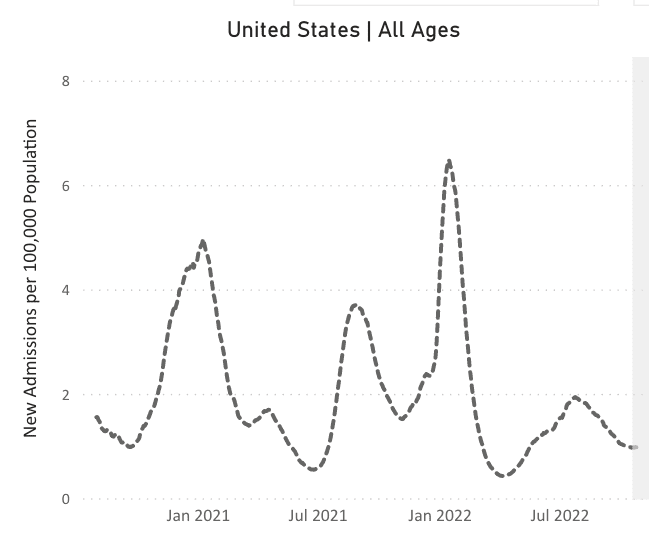
Fallecidos: For the week ending October 26, 2,649 people died of COVID nationally. This is the 16th week in a row that at least 2,500 people have died from COVID.
Sobre COVID largo: A study at Duke University scheduled to start in January will examine whether longer courses of Paxlovid have any effect on Long COVID.
Pronóstico: El CDC reported this week that Black and Latino/Hispanic individuals were less likely to be prescribed Paxlovid. While the Biden administration wants to proclaim that we have the tools available, they are clearly not equally accessible.
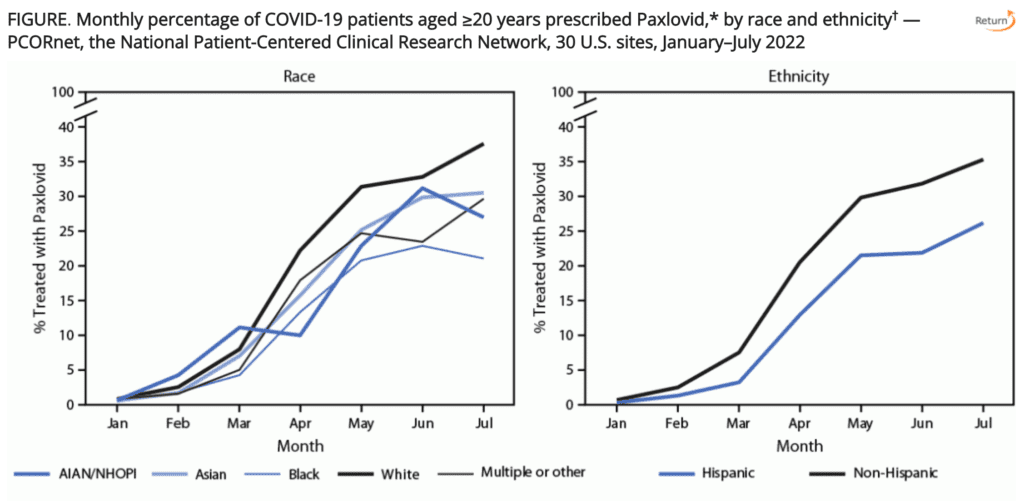
We also have fewer tools to fight COVID! Evusheld, a monoclonal antibody used for prevention, is ineffective against newer variants, including BA4.6 and the BQs. We need to focus on reducing transmission while continuing to develop additional treatments.
One tool we do have is the bivalent vaccine, which is still free. However, uptake has been very low: less than 10% of all folks eligible have been boosted.
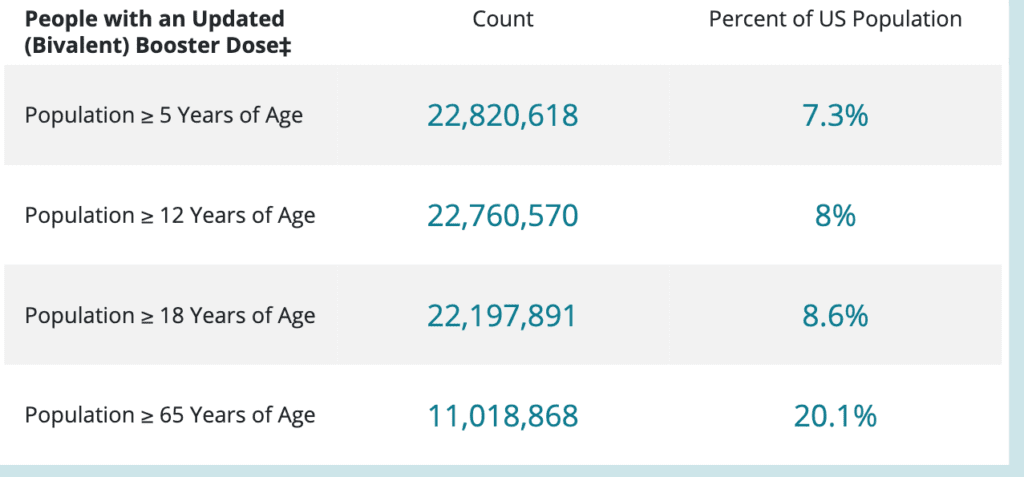
Layers of protection remain important. For more great advice on the ventilation layer, check out MAP Center for Urban Health Solutions’ guide: Sharing practical information about indoor air quality with community spaces.
Notes: 1) The numbers in this report were current as of 10/28. The CDC updates data frequently as it receives refreshed information. Today’s numbers may be slightly different from the data here. 2) Check out the links throughout & see our website for more! https://peoplescdc.org.